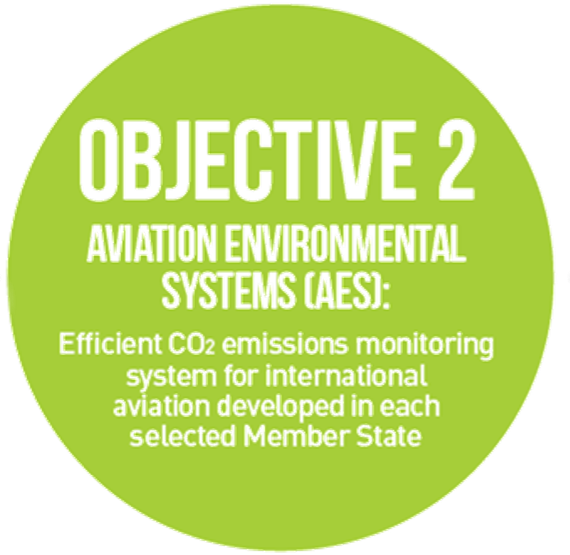Objective 2: Aviation Environmental System

The Aviation Environmental System (AES) is a tool that provides the required equipment and software to measure CO2 emissions from international aviation and to centralize the collected data in a database where results can be stored and further analyzed.
This system aims at achieving three main objectives:
- provide a tool that allows Civil Aviation Authorities (CAAs) to monitor CO2 emissions from international aviation at the State level,
- to enforce a single, standard format to be used at the stakeholders level (in particular by airlines) to submit flight and fuel data to their CAAs, and
- to facilitate the data reporting process done by the CAAs, by automatizing a number of steps needed to submit data to ICAO.
All 14 States that participated in the ICAO-EU Project benefitted from this initiative.

Legend:
Orange dotted square: Aviation Environmental System (AES)
Blue square: AES core database
The AES (represented in the figure above in the orange dotted square) is composed of a core database (in blue) and an internal engine for data validation and verification (to treat imported data), as well as a component for data aggregation and analysis (to generate exported data).
The light blue square on the top represents the data collection and preparation processes performed at the stakeholders’ level. The monitored data can either be output directly in the standard format accepted by the AES or can be first generated in a native format, that is then processed by an interface to convert it to the standard format. The development of such a customized interface requires additional resources and should be seen as a temporary solution only before the definitive adoption of the standard format in the internal collection process of the stakeholders.
The transmission from the standard format generated by the stakeholders to the AES can be performed using several communication means, for instance via Excel spreadsheets (Form ENV1) or web interfaces supporting more formats such as CSV, XML, etc.
On the left-hand side, one can see that the AES also accepts the projections of baseline and expected results generated from historical data provided by the stakeholders. This allows the tool to compare the monitored, actual CO2 emissions with the projections of CO2 emissions obtained without or with the implementation of mitigation measures. So far, these projections can be imported in the AES through Excel spreadsheets.
On the right-hand side, the reporting process from the AES to ICAO is illustrated. The use of the AES eventually allow for the overall process to be automatized.
 | |